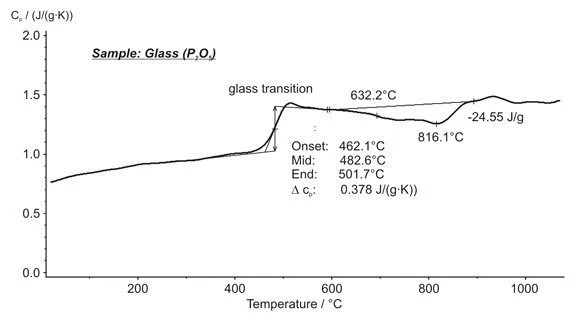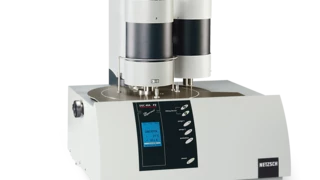CERAMICS & GLASS
Phosphate Glass Powder — Glass Transition, Structural Change, Specific Heat
A fine grained phosphate glass powder was measured between room temperature and 1100°C.
Typical for such glass types, the Glass Transition TemperatureThe glass transition is one of the most important properties of amorphous and semi-crystalline materials, e.g., inorganic glasses, amorphous metals, polymers, pharmaceuticals and food ingredients, etc., and describes the temperature region where the mechanical properties of the materials change from hard and brittle to more soft, deformable or rubbery.glass transition was measured at 483°C (midpoint). At 632°C, an ExothermicA sample transition or a reaction is exothermic if heat is generated.exothermal effect was obtained. This effect is most probably caused by structural changes in the material and/or agglomeration of the powder particles above the softening point. The large surface of the powder is reduced causing a slight energy release. The energy release superimposes the true specific heat values between 600°C and 900°C. (measurement with DSC 404 F3 Pegasus®®)

